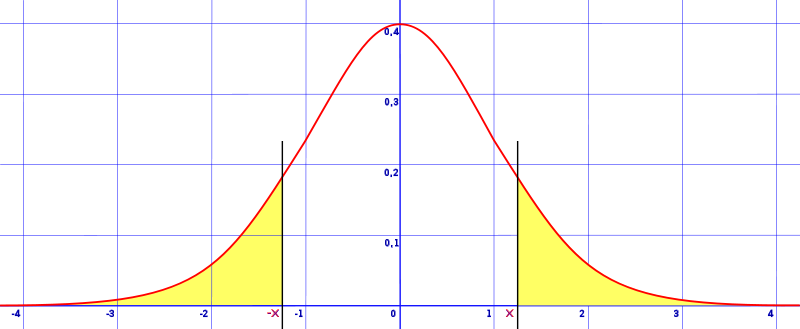
Remember that we need at least ?30? samples in order for the Central Limit Theorem to apply and normalize the distribution. The formula we’ll use to calculate the test statistic depends on the information we have and the size of our sample. The next step is always to calculate the test statistic, and then determine whether that value lies inside or outside the region of rejection. We can also find the boundary or boundaries of the region region based on the alpha value and which test type we’re using.
2 sided hypothesis test calculator how to#
Which means the difference could by in either direction (less than or greater than), which means we’ll have two rejection regions in the distribution.įor a lower-tail test, you’ll find the boundary of the rejection region at a ?z?-score for ?0.1000?.Ĭalculating the test statistic when standard deviation is known and unknown, and when sample size is large and smallĪt this point, we know how to write the hypothesis statements, determine the alpha level we want to use, and set up a one- or two-tailed test based on the hypothesis statements. We’re not saying that one value is greater or less than the other, we’re just saying that they’re different. When we state in the null hypothesis that the population mean or population proportion is equal to some value, and then state with the alternative hypothesis that the mean or proportion is not equal to that value, we’re not predicting any direction between the variables. Here’s the way to understand one- and two-tailed tests. ?H_0? with a ?\ge? sign and ?H_a? with a ?, or ?\geq? and ? 
?H_0? with a ?\le? sign and ?H_a? with a ?>? sign ?H_0? with an ?=? sign and ?H_a? with a ?\ne? sign We’ve already learned that, for both means and proportions, we can write the null and alternative hypothesis statements in three ways: So let’s define one- and two-tailed tests, and start over with the hypothesis statements to show when we’ll use each test type.

Whether we run a one- or two-tail test is dictated by the hypothesis statements we wrote in the first step. But any test statistic we calculate will depend on whether we’re running a two-tail test or a one-tail test. We recommend setting standards based on available traffic levels, risk appetite, and the willingness to back test.We’ve already covered the first two steps, and now we want to talk about how to calculate the test statistic. Of course, we don’t recommend waiting for 99% confidence either. If you do one test a month, at least two likely had erroneous results. If you make ROI projections based on 80% confidence and roll out that experience, you have a one in five chance of missing them completely. Making decisions too early is one of the most common mistakes we see in A/B Testing. While there are a limited set of situations when this is okay, it is never ideal. In the digital community, it’s not uncommon to see A/B testing tools make calls at only 80% or 85% confidence. Common Confidence Levels and Their Z-Score Equivalents This is the standard confidence level in the scientific community, essentially stating that there is a one in twenty chance of an alpha error, or the chance that the observations in the experiment look different, but are not. The most commonly used confidence level is 95%. If you roll out this Variant Recipe, there is only a one in 20 chance that you will not see a lift. If your two-sided test has a z-score of 1.96, you are 95% confident that that Variant Recipe is different than the Control Recipe. Z-scores are equated to confidence levels. What Does My Confidence Level Mean to Me in a Business Sense? We believe it’s just as important to know if your test is statistically underperforming as it is to know if it’s performing better than Control. With a one-sided test, you are only mathematically confident about one or the other, but never both.

If you conduct a two-sided hypothesis test, you can be mathematically confident about whether or not your Variant Recipe is greater than or less than your Control Recipe. We use the Z-score calculator to test how far the center of the Variant bell curve is from the center of the Control bell curve. The Variant Recipe and all of the visitors in it make up a second bell curve. In A/B Testing terms, all of your visitors are observations, and the Control experience makes up a bell curve. Talk about how we can help with your Experimentation programĪ z-score is a standardized score that describes how many standard deviations an element is from the mean.


 0 kommentar(er)
0 kommentar(er)
